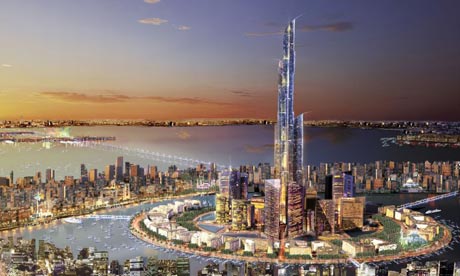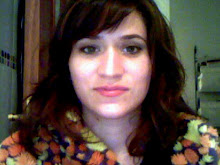The Architectural Monstrosities Collection: "City of Silk/Madinat al Hareer""

About a month ago, I visited the area that would be the proposed site for this mega-project to build a new, planned city in Kuwait. It is a quiet coastal flatland with sparse estuaries, seagulls, shell critters and crabs. Here are some pictures that I took from the tranquil, sunset stop in the middle of nowhere.




While I would love to see a Kuwait that as not so subject to urban primacy, the idea of the Silk City project currently on the books to be built in the Subiya area of Kuwait scares the living daylights out of me, and in a less casual tone-only perpetuates the Dubai Model monopoly that seems to have local urban planners under a sinister hypnosis.
The project, according to an article from The Guardian, would cost 132 billion USD and is estimated to be finished by 2023. This host city (مدينة الحرير) would also be the location for Burj Mubarak al-Kabir, which would stand as the tallest tower in the world at 1001 meters high. To compare, here is a picture that shows the largest tower in Dubai in relation to the proposed Burj.
 According to the developers, a group called civicarts (click here for link to full description of the planned city) the tower will be:
According to the developers, a group called civicarts (click here for link to full description of the planned city) the tower will be:"Burj Mubarak Al Kabir: the Tower of a Thousand and One Nights. Every City has a symbol that stands as an icon for the world to know. For Madinat Al Hareer, we have many: a grand waterway on the Bayside of Kuwait, a new resort & leisure community on the Riverside, a new centre of culture on the Gulfside, and a new wildlife sanctuary and science academy on the Desertside. But on the skyline, we will have a new icon as the skyline pinnacle of Madinat Al Hareer: the Burj Mubarak Al Kabir, the Tower of A Thousand and One Arabian Nights. Standing 1001 metres tall, it will house 7 vertical villages combining offices, hotels, leisure, and residential into a vertical city centre that reaches for the heavens. This ‘sky city’ will combine the ceremonial grandeur of a great city, the heroic routine of everyday life, and all the support services and facilities that are accustomed to the finest hospitality offers for any community in the world. It seeks to be one of the taller towers in the world. The design is inspired by the defiant flora of the desert as much as the rich folklore of Arabic heritage described in Kitāb 'Alf Layla wa-Layla. These stories of life become a metaphor for the complexity of lives that will emerge from Madinat Al Hareer, the City of Silk."
A Thousand and One Nights? Are they serious??? If they want to speak of learning from the desert, one of the most fundamental truths about this land is that man can only fight against nature before his battle is lost in the sands. The land's oil might give ammunition for the battle today, but its climate will ultimately consume these unsustainable creations back into the dunes.
This example is the bottle of champagne to break in commemoration of the first entry of my architectural monstrosities collection. It is the epitome of an urban planning cancer taking hold of the Gulf. Here is the website for the new city: http://www.madinat-al-hareer.com/. Prepare to be frightened with this video experience:




The notion of superlatives within (vertical) architecture is interesting, albeit also a bit sophomoric and worrisome. I remember wondering, when hearing for the first time that the 'Freedom Tower', the skyscraper by Daniel Liebeskind that is/ was to replace the Twin Towers in New York, was to be 1776 feet tall, how one could actually tell if the eventual height was accurate, as well as, why? Beyond some obscure symbolic reference did the height of the building need to be this particular figure? Why use feet? Why not inches or even meters? Why not make its weight, say, 1776 tons instead? This figure means nothing and bears no relevance to the actual function of the building.
I worked a while back in KL (Kuala Lumpur) around the time the (twin) Petronas Towers were being completed, which were the tallest building at the time. They used, as is the custom in the region, concrete as the primary structural material, which meant that towards the top end of the towers their structure itself occupied most of the interior space, i.e. towards the top floors there really is not much rentable space, it is all cosmetic!
What is the value of a 1001 meter tower if its worth is inherently tied to its stature? If it serves no other function than being 'the tallest' (something that will, inevitably be surpassed by someone else, somewhere else, soon enough)? At that height one probably needs to 'pump up' air to the top floors as the air is too thin and cold for comfort. The sway of the structure at that height, which must be measured in meters, might also cause other types of discomfort (sea-sickness), and imagine living on top, taking the multiple elevators down (as at those heights one elevator will not be enough), and noticing that one forgot the car-keys at home... Architecture needs to be more than just about size, in the end what matters is how you use it...
Tom
man, thanks for that anecdote about the Freedom Tower and the 1776 stories. Only in America! I really do not understand this whole importance of building skycrapers in the Gulf countries. Also, given how much 20 years difference has made in Kuwait in terms of urban landscape (how things looked and what the archtectural style was in the 70s-80s compared to today) i even think this whole planned city is pointles...by the time the city is to be completed, perhaps this fad of skyscraper city will have been over...
and as you say, these buildings are not even functional!
do you know of any other planned city projects in the gulf? i am curious to know how they compare. also, do you know of any REAL movements (expansive projects being undertaken) to go against this artificial island/skyscraper vision that has a virtual monopoly over all urban development?